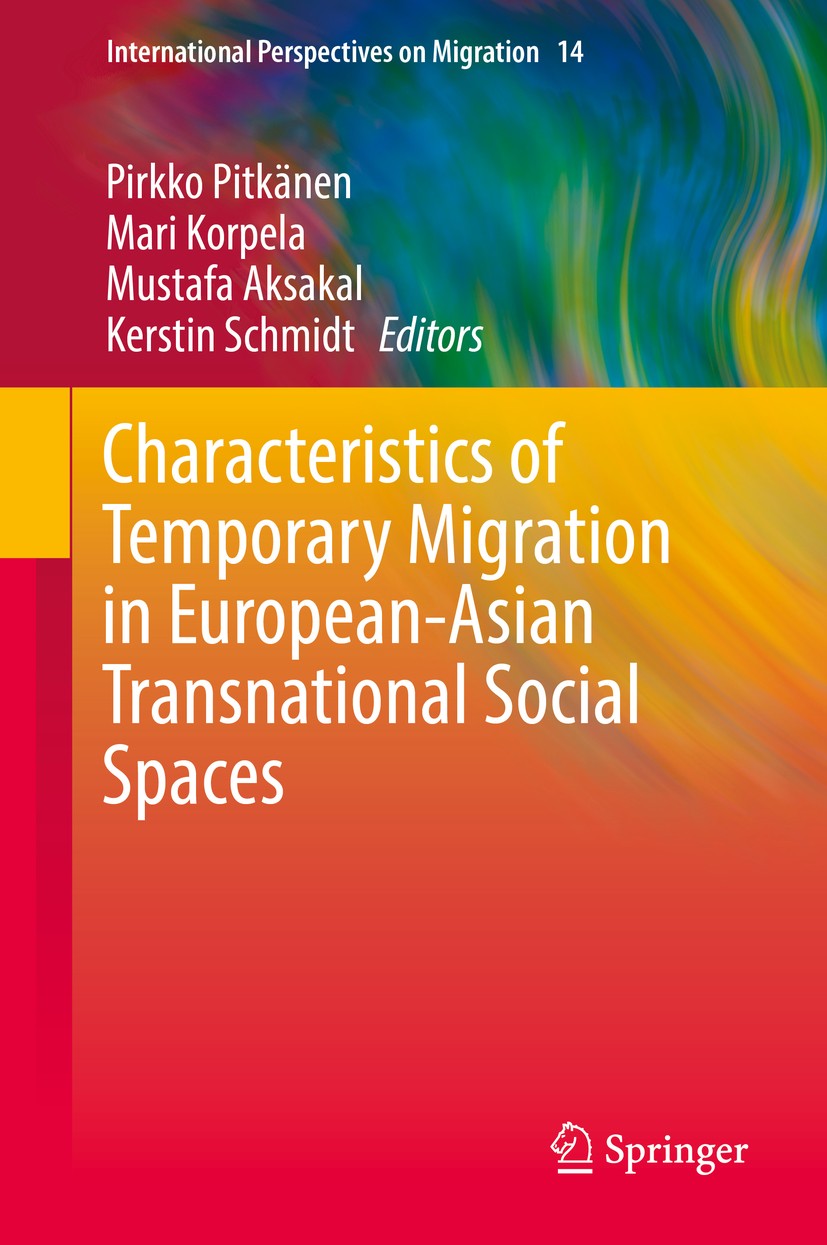| 书目名称 | Characteristics of Temporary Migration in European-Asian Transnational Social Spaces |
| 编辑 | Pirkko Pitkänen,Mari Korpela,Kerstin Schmidt |
| 视频video | http://file.papertrans.cn/224/223973/223973.mp4 |
| 概述 | Provides a unique understanding of temporary transnational migration, including its transformative characteristics.Describes the effects of not only those on the move, but also those who do not move.L |
| 丛书名称 | International Perspectives on Migration |
| 图书封面 |  |
| 描述 | .This book focuses on the experiences of temporary movements between Asia and Europe from the perspective of migrants and mobile people. It raises important questions such as: Why do people migrate on a temporary basis and what does this actually mean? How are these trajectories shaped? What are the implications of temporary moves for migrants and non-migrants? And how are transnational ties and practices characterized in the context of temporary migration? .By shedding light on the practices and experiences of individual migrants, the book provides useful insights into understanding the challenges arising in an increasingly interconnected and mobile world. The chapters indicate that temporary migratory movements are on the rise: on the one hand on a voluntary basis such as reflected in labour migration, lifestyle migration and international student mobility, and on the other hand in an involuntary way as expressed in different forms of forced migration. Either way, temporary migration has diverse political. legal, economic, social and cultural implications, including the emergence of novel transnational networks and practices.. .The book is based on the findings of the internation |
| 出版日期 | Book 2018 |
| 关键词 | Migration; Temporariness; Transnationalism; Europe; Asia |
| 版次 | 1 |
| doi | https://doi.org/10.1007/978-3-319-61258-4 |
| isbn_softcover | 978-3-319-87034-2 |
| isbn_ebook | 978-3-319-61258-4Series ISSN 2214-9805 Series E-ISSN 2214-9813 |
| issn_series | 2214-9805 |
| copyright | Springer International Publishing AG 2018 |
 |Archiver|手机版|小黑屋|
派博传思国际
( 京公网安备110108008328)
GMT+8, 2025-11-12 00:07
|Archiver|手机版|小黑屋|
派博传思国际
( 京公网安备110108008328)
GMT+8, 2025-11-12 00:07


